
Product Operations: What Is It & Why It's Important for Your Company
Creating successful products requires more than great ideas or cutting-edge technology in today's fast-paced digital landscape. It requires seamless collaboration, efficient processes, and data-driven decision-making — components often managed by an unsung hero in the product development process: Product Operations (ProdOps).
ProdOps, though a relatively new discipline, plays a crucial role, from streamlining workflows and managing tools to fostering cross-functional communication and deriving data insights. Around 96% of companies with over $1 billion in revenue report having dedicated Product Ops teams. ProdOps is the glue that holds diverse product teams and processes together.
In this blog, we'll delve deeper into the world of Product Operations — what it is, why it matters, and how it's reshaping how we develop and manage products. Regardless of your role—product manager, developer, or business leader—understanding ProdOps can offer invaluable insights into achieving product success. So, let's get started on this exciting journey into the heart of product creation and management.
What is Product Operations?
Product operations, often abbreviated as "ProdOps," is a role or function within a company that focuses on improving the effectiveness of the product development process. This function is crucial as it brings together people, processes, and data to drive product strategy and execution.
Product Managers Vs. Product Operations
Product Managers and Product Operations are two distinct but complementary roles within a product organization, each playing a vital part in the product's life cycle. While they might overlap in some areas, their primary responsibilities and objectives differ.
Product Managers (PMs): Product Managers are essentially the "CEOs" of the products. They are responsible for guiding the success of a product and leading the cross-functional team responsible for improving it. Their role often includes:
- Strategy: Defining the product vision and strategy, aligning it with company goals and market opportunities.
- Roadmap Planning: Creating and managing a product roadmap, prioritizing features based on value to the user and the business.
- Market Understanding: Conducting market research to understand customer needs, competitive landscape, and market trends.
- Product Development: Working closely with the engineering team to ensure the product is developed as per specifications.
- Go-To-Market: Collaborating with sales, marketing, and customer success teams to successfully launch the product and ensure it meets user needs and expectations.
Product Operations (ProdOps): Product Operations, on the other hand, is a function that focuses on improving the efficiency of the product team and the product development process. They are often seen as the "COOs" of the product, responsible for streamlining operations and processes to ensure the product team can work effectively. Their role often includes:
- Process Improvement: Establishing, documenting, and optimizing product development processes.
- Tool Management: Managing product management tools and platforms used by the product team, ensuring they are used effectively.
- Cross-functional Coordination: Facilitating coordination and communication across various teams involved in product development.
- Data Management and Analysis: Collecting and analyzing product data to provide insights that inform product decisions.
- Product Knowledge: Serving as a central repository of product knowledge and information, ensuring it's readily accessible to all stakeholders.
In a nutshell, while Product Managers focus more on the "what" and "why" of the product (what should we build and why should we build it), Product Operations focus more on the "how" (how can we build it most effectively). Both roles are crucial for the success of a product, and when they work well together, they can significantly improve the efficiency and effectiveness of the product development process.

Why is Product Operations Important?
Product operations play a crucial role in enhancing the efficiency and effectiveness of product teams. Here's why it's important:
- Streamlines Processes: Product operations help eliminate bottlenecks, streamline workflows, and ensure the product development process runs smoothly.
- Enhances Decision-Making: By managing and analyzing product-related data, product operations provide valuable insights that inform strategic decisions about product development and improvements and validate product ideas.
- Improves Communication: Clear and effective communication facilitated by product operations can lead to better collaboration and fewer misunderstandings among team members and stakeholders.
- Increases Customer Satisfaction: By ensuring that customer feedback is considered and incorporated into product decisions, product operations can help to improve the product, increase customer satisfaction and promote customer-centricity.
- Boosts Productivity: By improving processes and coordinating work across teams, product operations can help to increase the productivity and effectiveness of the product team.
Product operations are becoming increasingly recognized as a critical function in companies that want to scale their product development capabilities effectively and efficiently. It serves as the operational backbone of the product team, enabling them to focus more on delivering value to the customers and less on managing processes and coordination.
What does a product operations manager do?6 Major responsibilities of product operations
A Product Operations Manager is a cross-functional role that ensures the smooth operation of the product development process and helps the product team deliver value to the end users more effectively and efficiently. Here are some typical responsibilities of a Product Operations Manager:
Manage product tech stack and tools
Product operations are responsible for selecting, implementing, and managing the tools and platforms used by the product team. Product tech stack and tools include project management software, product roadmapping tools, customer feedback platforms, metric analysis, user testing, and digital prototyping.
Product operations manage the product stack and tools that enable a company to develop, deploy, and maintain products. They must ensure that all the necessary tools are in place to enable their teams to work efficiently and effectively.
By leveraging the right product stack and tools, product operations can help teams become more productive while reducing costs and helping achieve product market fit. Here's how they typically handle this responsibility:
- Selecting the right tools and implementing them: ProdOps chooses suitable tools for the product team based on factors like functionality, ease of use, and cost, then implements them.
- Process Integration: ProdOps ensure the tools are well-integrated into the product development process and enhance team workflows.
- Evaluating tools and providing support: ProdOps regularly assess the effectiveness of the tools, gathering internal team feedback and monitoring usage data. ProdOps trains team members on tool usage and provides ongoing support for any issues.
- Managing data and optimizing usage: ProdOps ensures effective collection, management, and product data analysis through the tools. ProdOps continuously seeks ways to improve tool usage and automate tasks for increased efficiency and productivity.
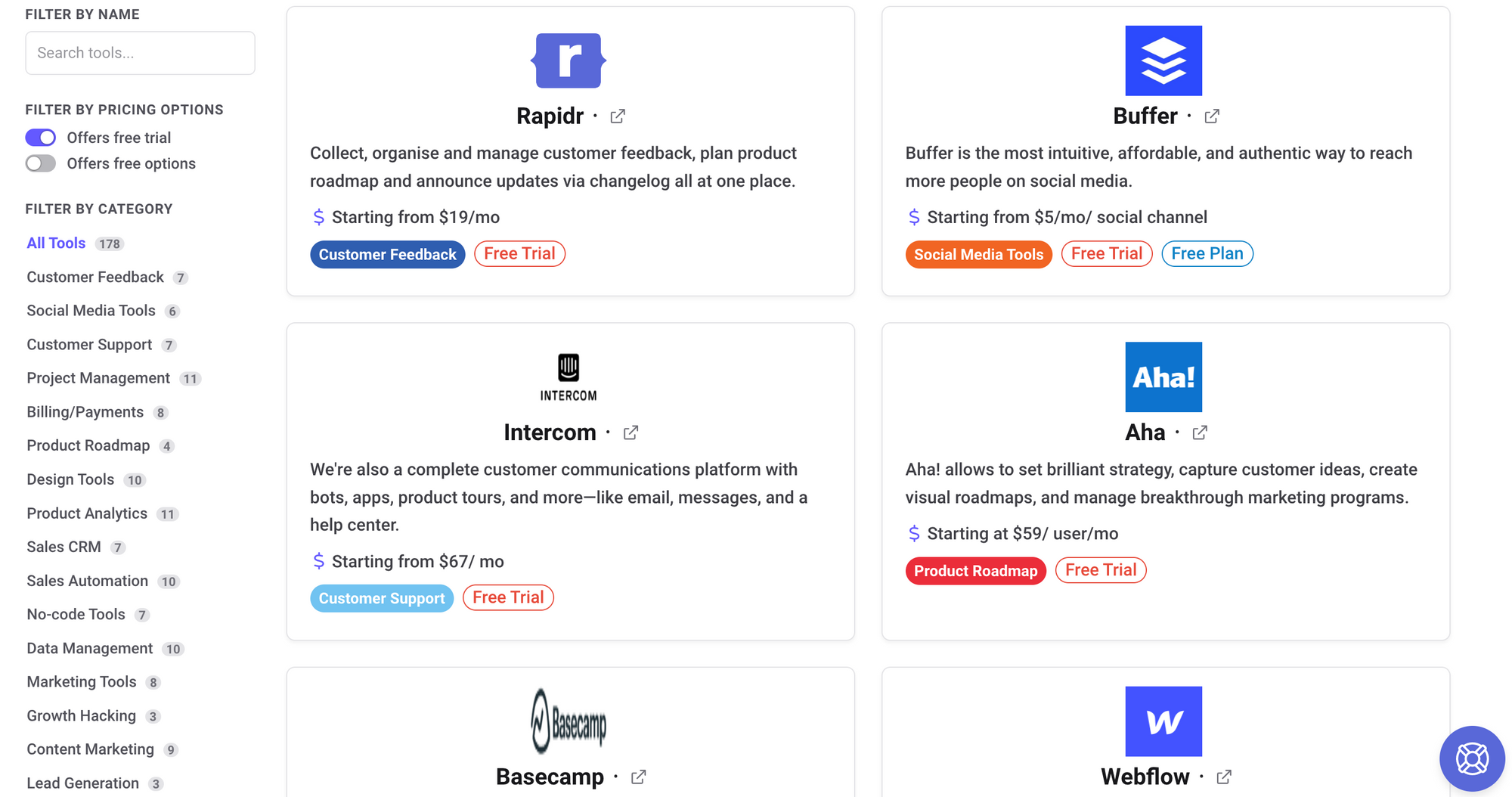
Enable the product team to run experiments
Product operations are essential for product teams to ensure they run suitable experiments to achieve their desired outcome. It enables them to increase the speed of experimentation and ensure their experiments succeed.
Product operations provide the product team with insights into what works and what doesn't so they can quickly identify areas where improvement is needed. This helps them run more experiments in a shorter time frame, which can lead to better products and services.
Product operations also help product teams optimize their experimentation process by providing data-driven insights into different experiments' performance. This allows them to adjust their strategies, ensuring they always run the most influential experiments possible.
ProdOps facilitates the product team to run more experiments through:
- Streamlining product development processes: ProdOps creates efficient workflows that save time, allowing the team to focus more on product experimentation.
- Managing data and tools required: They provide necessary data and insights for hypothesis formation and result analysis. They ensure the team has the right tools for conducting and tracking experiments.
- Supporting cross-functional coordination: They facilitate collaboration across teams, essential for multi-disciplinary experiments, and provide training on experimental design, execution, and analysis.
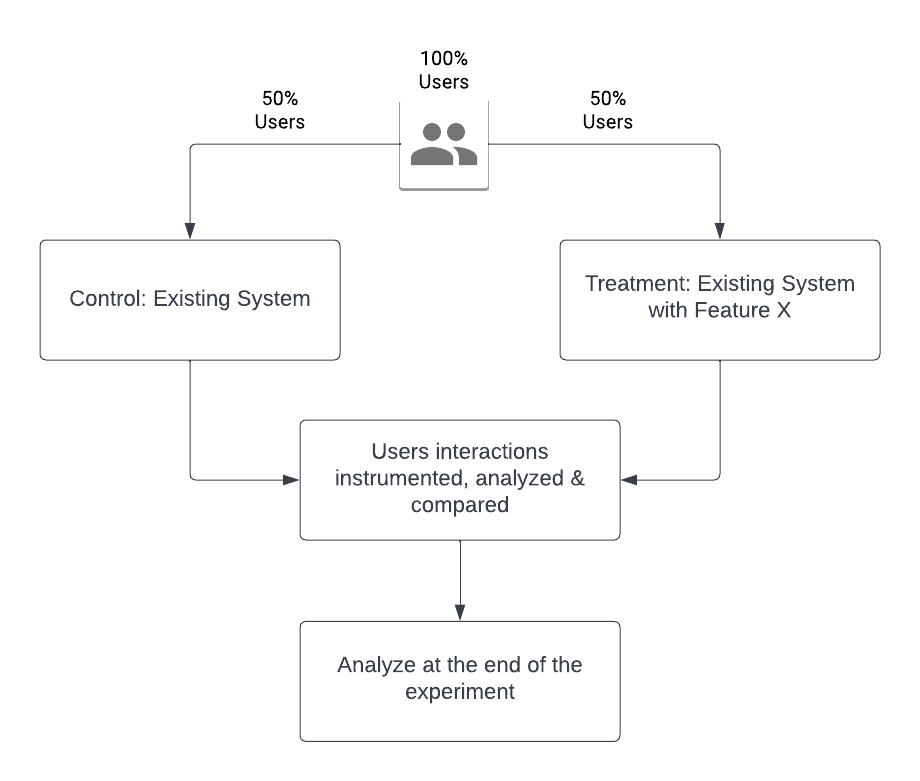
Facilitate cross-communication between product and support teams
Product operations help to ensure that both teams are on the same page regarding product development and customer service, as well as collaborating and communicating effectively. By facilitating cross-communication between them, product operations can help improve customer satisfaction and increase efficiency across the organization.
Additionally, by providing a unified platform for communication, product operations can help reduce miscommunication and ensure that everyone is on the same page regarding product development.
Product Operations (ProdOps) facilitates communication between product and support teams by:
- Defining Communication Processes: They establish clear channels and procedures for inter-team communication.
- Enabling Information Sharing: They ensure crucial product updates and customer feedback are effectively shared between teams with public product roadmaps and release notes.
- Managing Collaborative Tools: They implement tools that enhance cross-team collaboration.
- Organizing Cross-Functional Meetings: They coordinate meetings for teams to share updates, discuss issues, and align on goals.
- Managing Feedback Loop: They establish a system where customer insights from the support team inform product decisions, and product updates are communicated back to the support team to close the feedback loop.
- Updating Teams: They ensure the support team is trained and updated on new features or product changes to handle customer inquiries effectively.
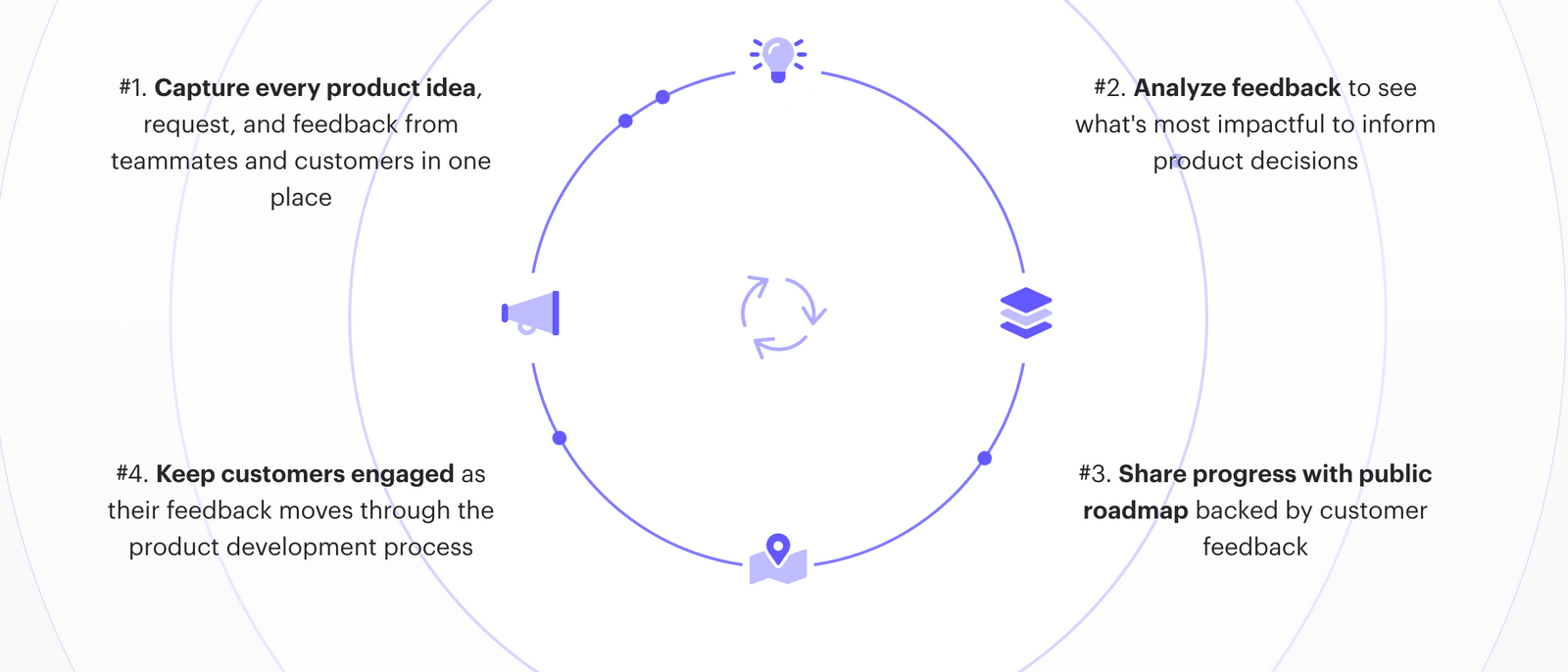
Manage customer feedback process.
Product operations play an essential role in managing customer feedback processes. Collecting, analyzing, and integrating customer feedback into product development ensures that products meet customer needs and expectations. They also help identify improvement areas, support product discovery, increase product adoption, and improve the customer experience.
Product operations teams use various tools to better manage customer feedback processes, such as surveys, focus groups, in-app feedback, user testing, and feedback tools to better understand customer needs and preferences and adjust products accordingly.
Additionally, product operations teams use data analysis techniques to identify trends in customer feedback which can be used to inform product decisions. Product Operations (ProdOps) plays a crucial role in managing the customer feedback process in the following ways:
Collection: ProdOps establish channels and tools for collecting different types of feedback from various sources, such as customer surveys, Intercom & Slack channels, support interactions, feedback widgets, etc.
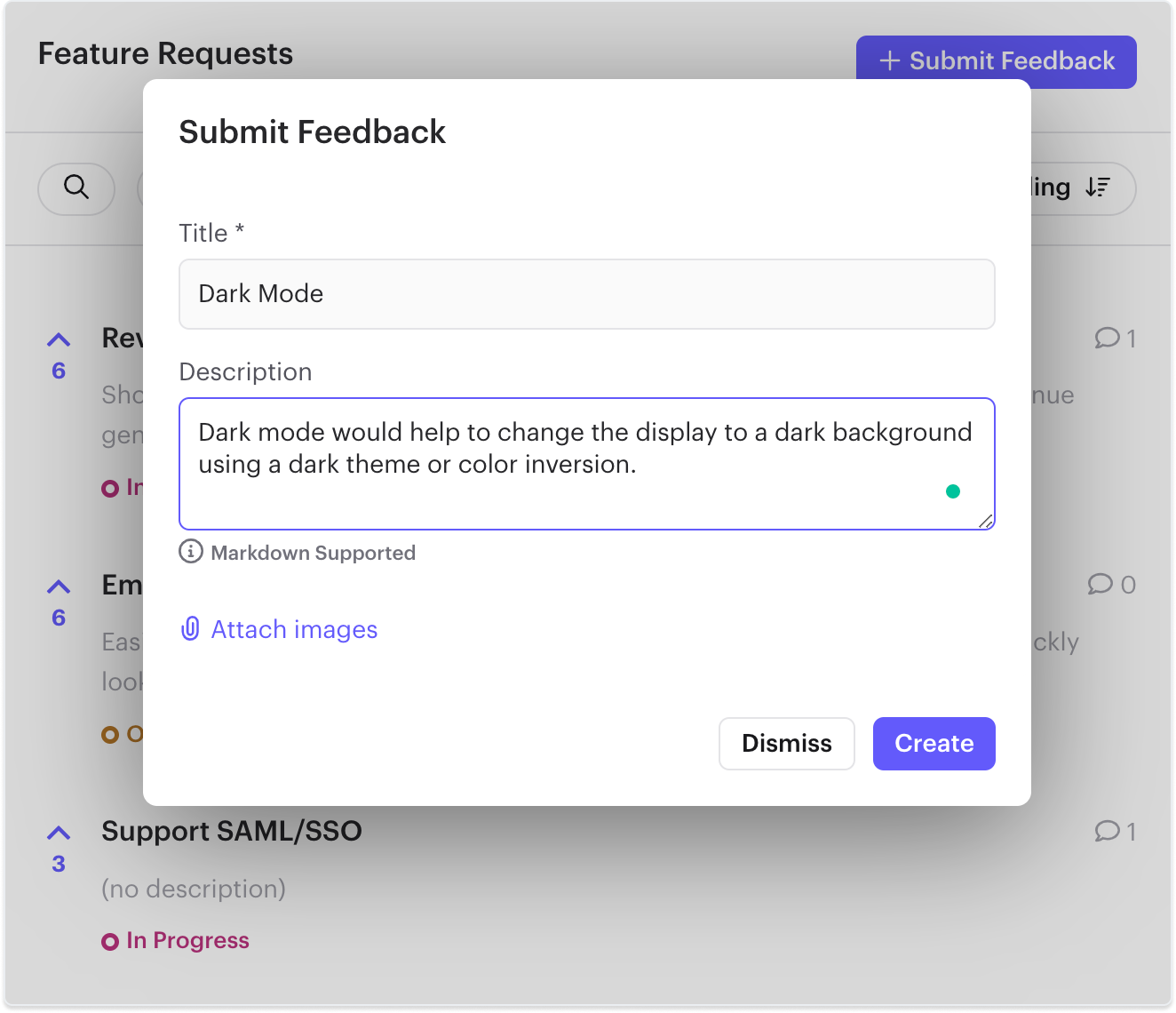
Organization: Product Ops help categorize and organize feedback to make it easy to prioritize and analyze. This could involve tagging feedback by feature, teams, issue, or user segments with feedback management tools.
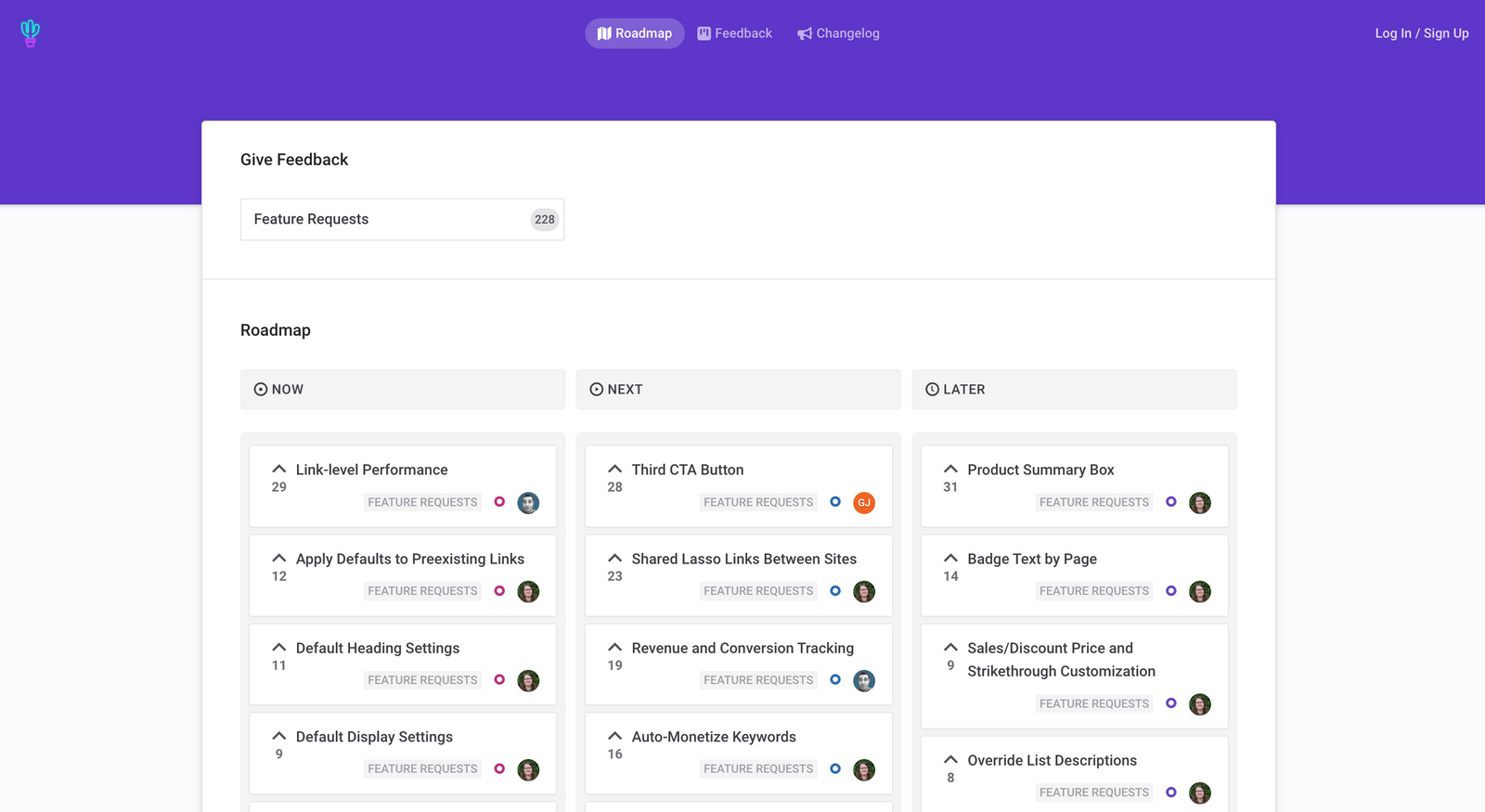
Prioritizing and analysis: They analyze feedback based on votes, comments, and user segments to identify trends, patterns, and insights that can inform product decisions. with Rapidr.
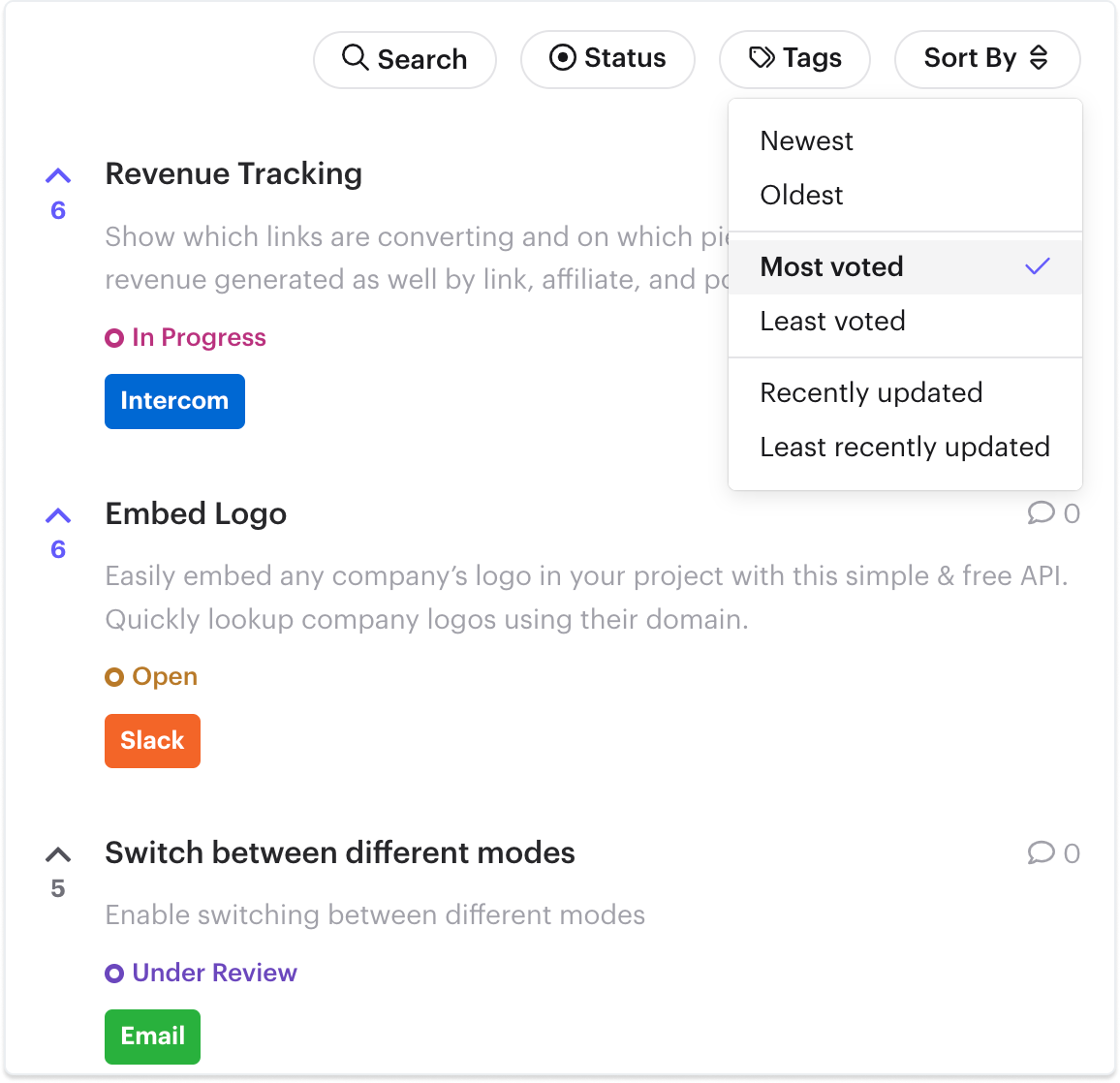
Integrations: ProdOps ensures feedback is integrated into the product development process, often by working with the product management team to prioritize feedback-based improvements with status updates and roadmaps.
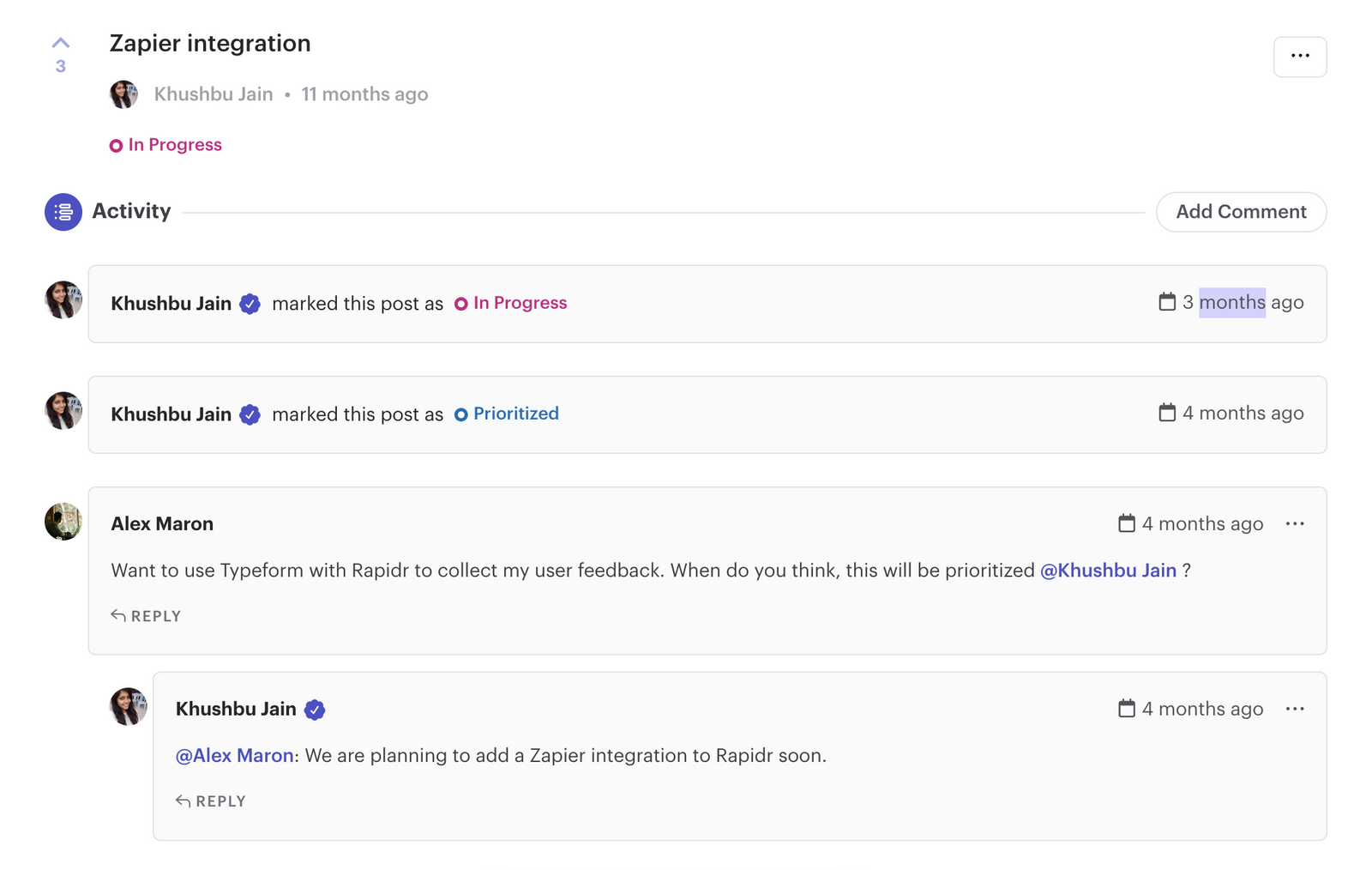
Communication: ProdOps communicate key insights from customer feedback to relevant stakeholders with product changelog, ensuring the voice of the customer is heard across the organization.

Follow-Up: They may also manage following up with customers to let them know their feedback has been heard and acted upon, closing the feedback loop and improving customer satisfaction and engagement.
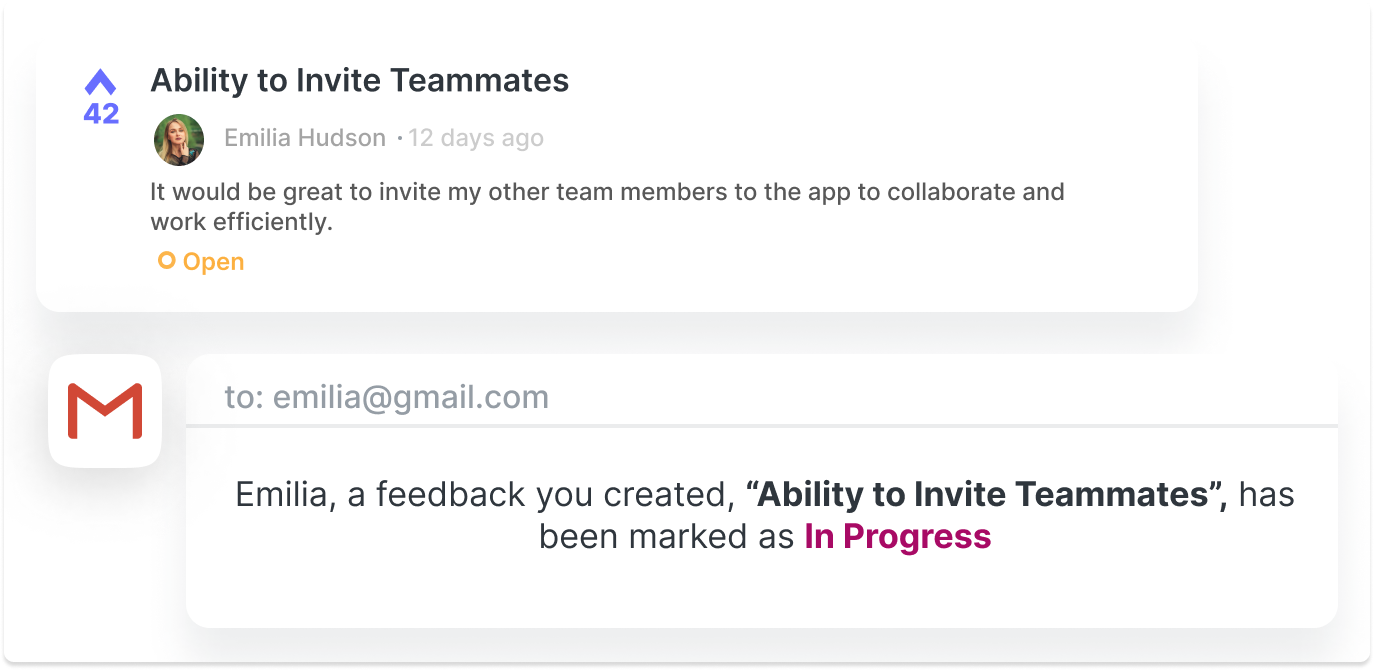
Data management and analysis
Product operations manage data related to the product's usage, customer feedback, and market trends. They analyze this data to generate insights that can inform product decisions and strategies.
By leveraging the power of product operations, businesses can gain insights into customer behavior, trends, and preferences. It also helps them identify areas where they need to improve to make their products more successful.
Additionally, product operations help companies develop strategies for optimizing their data management and analysis processes. With the right tools and techniques, product operations can streamline data collection and analysis so businesses can make informed decisions quickly and accurately.
Product Operations (ProdOps) plays a crucial role in data management and analysis in the following ways:
- Data Collection & Organization: ProdOps establishes and oversee the process of collecting relevant data as well as ensures that data is appropriately structured and stored, including product usage data, customer feedback, market trends, and more.
- Data Analysis & Reporting: ProdOps analyze data to extract insights that can inform product decisions. This could involve statistical analysis, trend analysis, predictive modeling, etc. ProdOps also create reports and dashboards that present data in an easy-to-understand way, helping stakeholders make informed decisions.
- Data Quality Control: ProdOps implement measures to ensure the accuracy and reliability of the data, such as data validation checks or data cleaning processes. This data can include product usage data, customer feedback, feature requests, Net Promoter Score (NPS), and support tickets.
- Data Accessibility: ProdOps ensure that relevant team members and stakeholders can access the data they need, often managing user permissions or creating self-service data tools.
Inform business decisions, product strategy, and product roadmap
By understanding customer needs and market trends, product operations help businesses make informed decisions about their products. Additionally, product operations provide valuable insights into customer behavior, which can be used to develop better products that meet customer needs.
Furthermore, product operations can also help businesses create a successful product roadmap by providing data-driven insights into future trends and customer preferences. In short, product operations are an invaluable tool that helps businesses make intelligent decisions and develop successful products.
By understanding how customers use, interact with, and experience the product, product operations teams can provide critical insights that inform the product roadmap and help to prioritize features and enhancements.
Product operations teams can also provide data-driven insights on customer feedback, user behavior, and usage trends in order to identify areas of improvement. This helps product managers make informed decisions about what features should be added or removed from the product in order to maximize customer engagement and satisfaction.
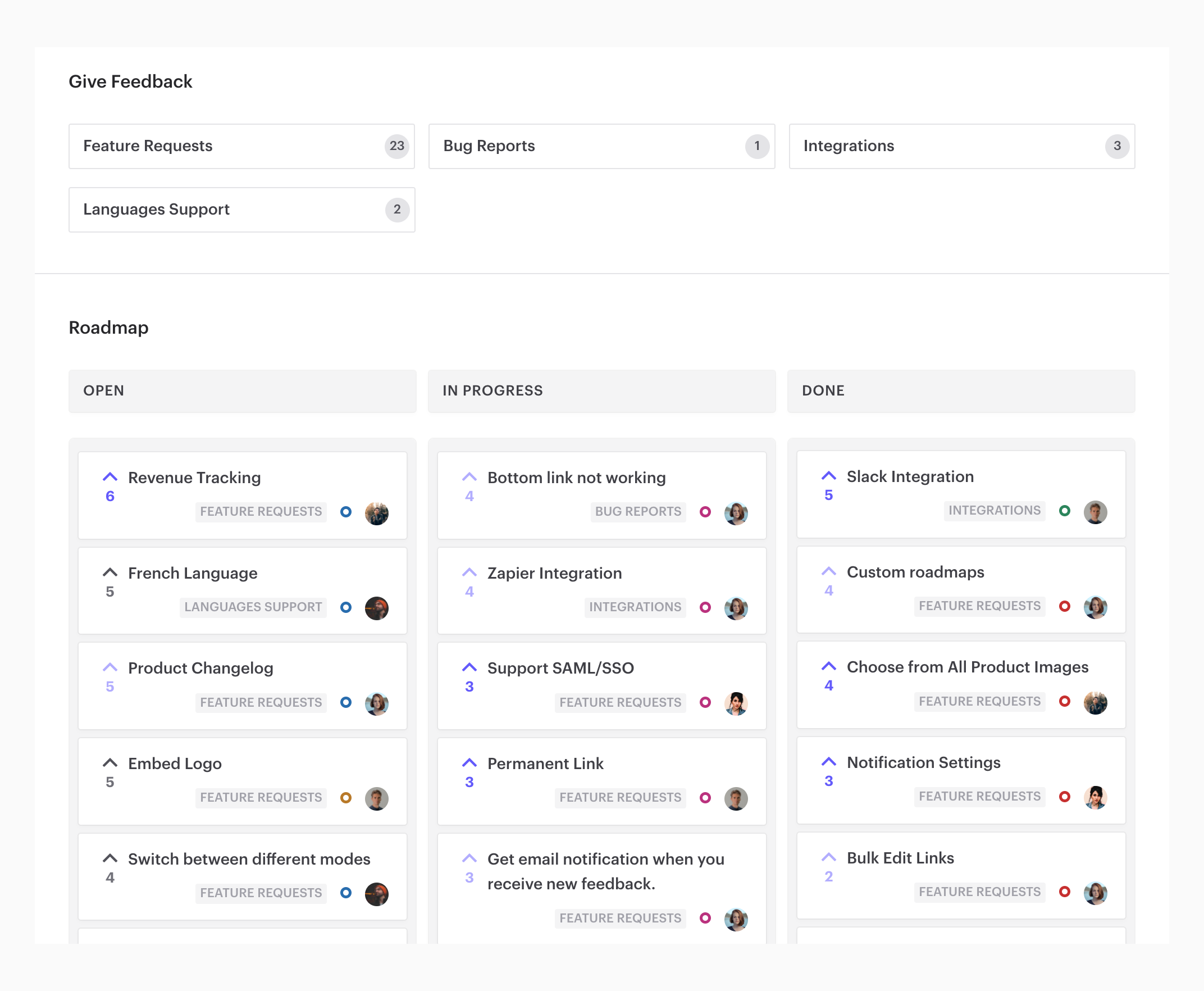
Do you need Product Ops?
Product Ops teams are becoming increasingly crucial for businesses of all sizes. They are responsible for managing the product development process, from design to launch. But how do you decide if your company needs a Product Ops team?
When deciding whether your company needs a Product Operations (ProdOps) team, consider the following questions:
- How large and complex is your product portfolio?
- How much data does your product generate?
- How large is your product team?
- How often do cross-functional collaborations occur?
- How much customer feedback do you receive?
- Are there inefficiencies in your product development process?
- How many tools does your team use?
- Are you planning to scale your operations?
By evaluating your current operations and future growth plans against these questions, you can decide whether a dedicated ProdOps team would benefit your organization.
Drive Product-led growth with Product Ops
Product-led growth (PLG) is a go-to-market strategy that focuses on using the product as the primary driver of customer acquisition, conversion, and customer retention.
Product Operations (Product Ops) is a discipline within an organization that supports the product team in driving strategic initiatives and improving operational efficiency. To drive PLG with Product Ops, you can follow these key steps:
- Understand the Product and Customer Journey: Gain a deep understanding of your product, its value proposition, and the customer journey from acquisition to retention. Identify the key touchpoints where Product Ops can have an impact.
- Data-Driven Approach: Leverage data to identify opportunities for growth and improvement. Work closely with product managers and analysts to define key performance indicators (KPIs) and establish metrics to track the success of PLG initiatives.
- Customer Feedback and Insights: Establish mechanisms for gathering customer feedback and insights. This includes user surveys, feedback forms, customer interviews, and user analytics. Use this feedback to identify pain points, areas of improvement, and opportunities to enhance the product experience.
- Cross-Functional Collaboration: Product Ops should collaborate closely with product managers, engineers, designers, marketing, sales, and customer success teams. Foster a culture of collaboration and alignment to ensure that PLG initiatives are effectively executed across the organization.
- Onboarding and Activation: Focus on optimizing user onboarding and activation processes. Identify potential bottlenecks or friction points that may hinder user adoption. Work with product managers and UX/UI designers to streamline the onboarding experience and drive user activation.
- User Education and Enablement: Develop strategies to educate and enable users to get the most out of your product. This can include creating knowledge bases, tutorials, video guides, and interactive demos. Help users understand the value of your product and empower them to become advocates.
- Product-Led Expansion: Identify opportunities for upselling, cross-selling, and expanding the usage of your product within existing customer accounts. Work with sales and customer success teams to develop strategies and processes to drive expansion.
- Continuous Iteration and Experimentation: Embrace a culture of continuous iteration and experimentation. Use data to inform decision-making and test new ideas. Implement an iterative feedback loop where Product Ops works closely with product managers to gather insights, prioritize initiatives, and drive improvement.
- Measure and Optimize: Establish processes to measure the impact of PLG initiatives on customer acquisition, conversion, and retention. Continuously monitor KPIs and iterate based on the results. Use A/B testing, beta testing, and other experimentation methods to optimize the effectiveness of your PLG strategies.
- Share Success Stories: Communicate and share success stories internally to build momentum and support for PLG initiatives. Celebrate wins and showcase how the product-led approach drives growth and customer success.
Product-led growth is a customer-first strategy. By following these steps, using customer feedback for product-led growth, and leveraging Product Ops as a strategic enabler, you can drive product-led growth and unlock the full potential of your product in acquiring, converting, and retaining customers.
Incorporate customer feedback into your product development process:
- Set up a Customer Feedback System
- Collect Actionable Feedback from Customers and Teammates
- Analyze, Prioritize, and Categorize Feedback Data to Make Sense of It
- Act and Have a Specific Product Evolution Plan
- Announce New Features and Product Updates
Rapidr helps SaaS companies set up a dedicated place to keep track of different types of customer feedback, improve their product while listening to their customers, and use product-led strategies to grow their SaaS. Sign up and set up a complete customer feedback system to inform and enhance your product development process with product ops and product managers.

